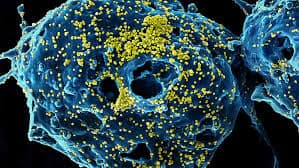As predicted by many epidemiologists, the Covid-19
pandemic renewed in intensity in the fall and early winter,
as activity moved indoors. Total hospitalizations in the US
have risen to over 130,000, more than double the peaks in
April and July, and deaths are running at about 2700 a
day, well above the prior April peak. The numbers are
likely to continue worsening through January, thanks to
the impact of holiday travel and gatherings.
The situation is comparable in Europe, which saw a huge
spike in cases in the fall and a subsequent wave of deaths.
More aggressive lockdowns in most European countries
led to a reduction of cases, except in the UK where they
are still soaring. A severe lockdown in the UK, to be wound
down only gradually in late 1Q, may restore order.
It all depends on the vaccines
• It is now clear that ending the Covid pandemic, and returning economies
to pre-pandemic “normal” conditions, depends on the pace of vaccination.
• Immediate aim: protect health workers and vulnerable (mainly elderly)
populations, relieving stress on health systems and enabling some social
restrictions to be lifted.
• Ultimate aim: “herd immunity” —the point at which an infection stops
spreading because of a lack of non-immune hosts. This will be needed for
full resumption of activity, including international travel.
• The herd immunity threshold (HIT)—the share of a population that must
be individually immunized, either through vaccination or prior infection—
depends on how easily a disease spreads.
For a highly contagious disease such as measles, HIT is around 92-95%
For relatively uncontagious diseases such as normal flu, HIT is around 33%
For Covid-19, HIT has yet to be firmly established, with published estimates ranging
from 50% to 67%. Some public health officials now suggest the HIT could be as high
as 80-90%, in part because of new more contagious strains such as the one that has
forced the UK into a new lockdown.
In theory, the number of vaccinations needed to reach HIT could be
reduced by relying on immunity among already-infected people.
By one estimate, 23% of the US population had been infected with Covid by end2020.
So vaccinating 44% of the population would be enough to reach a HIT of 67%.
• In practice, governments will ignore previous infections, since they are
hard to identify, and the duration of natural immunity is uncertain. They
will assume that HIT must be reached by vaccination alone. Explicit or
implicit vaccination targets of most governments are:
65%-100% of total population; or
Close to 100% of adult (over 16) population
• Wild card: new strains of Covid (e.g. one in South Africa), could prove
resistant to vaccines. If so, new vaccines must be developed, perhaps
more than once, and economies might need to be reoriented around
frequent mass-vaccination campaigns.
This worst-case scenario should be
kept in mind given our relatively optimistic baseline scenario that most
developed economies will reach HIT by the end of 2021.
The ultimate goal of vaccination will be herd immunity. But as a practical
matter inoculations will prioritize high-risk/vulnerable populations. The
typical DM timetable will be roughly:
High-risk/vulnerable populations: January-April
General population: April-December
• Details vary by country but typically the priority ladder is:
Frontline health workers and eldercare facility residents
Other older people (55/60 and up)
Others with underlying health problems
Other healthy adults
Children
• An exception is China, where the virus has been largely suppressed and
there is less need to prioritize older people. China’s priority list includes
nine categories of workers at higher risk of exposure, including health
workers, airline crews, workers in the food cold chain, and people
planning to work or study abroad.




